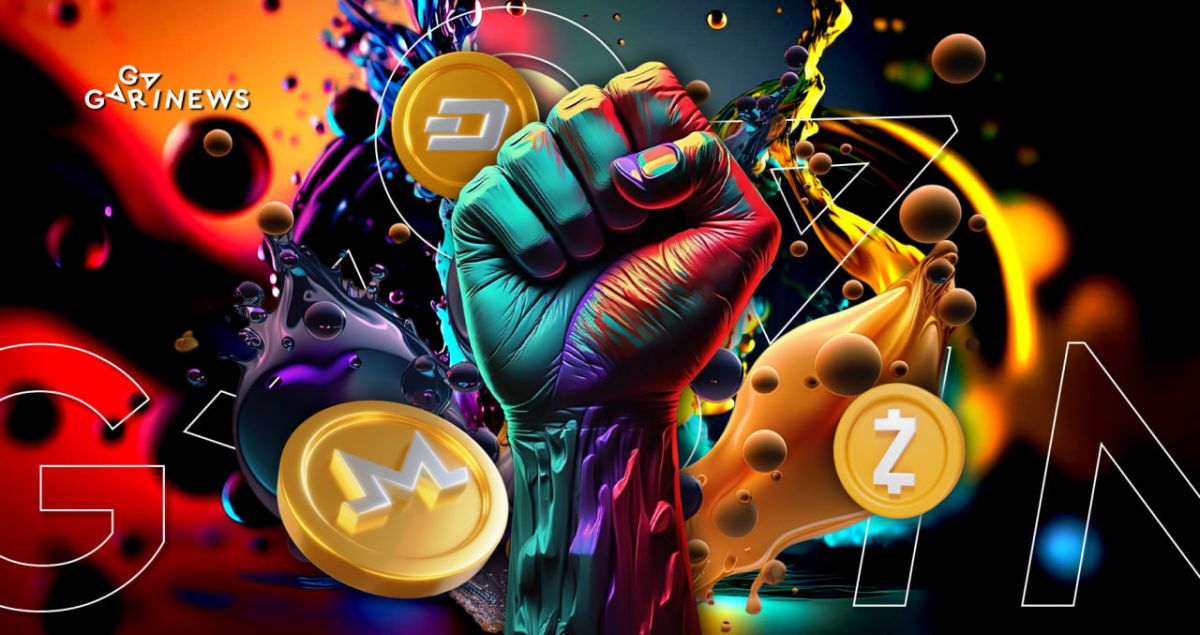How Privacy Coins Resist Regulatory Pressure

Anonymous cryptocurrencies are like a red cloth to a bull for regulators and central banks. Post 2017, almost all such privacy coins have experienced the pressurizing tactics of regulators, aiming to limit the confidentiality of transfers and the circulation of private crypto assets.
On this page
At one time, regulators started actively curtailing anonymous cryptocurrencies, even though the reasons for this were unfounded. It was assumed that these cryptocurrencies were implicated in criminal machinations and were predominantly used by criminals and terrorists. However, a 2019 report by Europol pointed out that Bitcoin remained the principal cryptocurrency in the darknet, while outside cyberspace, cash dominated criminal transactions. Nevertheless, regulators didn't revise their stance. The main targets were the leading anonymous assets in terms of trading volume: Monero, Dash, and Zcash.
Regulators had no direct way of influencing private transactions in blockchains or outright banning them. So they took a different approach – they started putting pressure on centralized cryptocurrency exchanges, which operated legally within specific jurisdictions. A few institutions decided that it was better to avoid problems with regulators and thus, they delisted anonymous coins, taking away currency pairs in which they were present.
Initially, Monero (the market's top anonymous coin) was delisted from the Japanese Coincheck and South Korean Upbit in 2018. In 2020, Coinbase and Bithumb also delisted Monero from their platforms. The Swiss exchange Shapeshift removed Monero, Dash, and Zcash. The Dutch exchange Litebit delisted Zcoin. Some countries began a crusade against anonymous assets, resulting in their outright ban in France, Japan, South Korea, and Australia.
In 2021, the Bittrex exchange delisted Monero, Dash, and Zcash, and a year later, the popular Huobi exchange followed suit, removing Monero, Dash, Zcash, Verge, Decred, Firo, and Horizen from its trading platform.
However, these steps didn't yield the anticipated outcome in the form of reducing trade volumes and anonymous transfers. Conversely, all metrics related to private assets continued to grow incessantly. The assets that were removed from closed trading venues found their way onto other reputable exchanges. As a result, the number of users and active Monero wallets only increased.
Developer showdown
After conceding their shortcomings, regulators turned to software developers. Their objective was to find a tool capable of reining in the unchecked nature of anonymous cryptocurrencies.
In the summer of 2020, CipherTrace took up this challenge. They announced the development of the first-ever solution to track anonymous Monero transactions, in collaboration with the U.S. Department of Homeland Security. This announcement sparked substantial debate within the Monero crypto community. Many XMR wallet owners cast doubts on the new tool's efficacy, given Monero's robust technologies such as Ring Signatures, RingCT, Bulletproofs, and Stealth Address.
Nevertheless, no ground-breaking advancements or exposures of criminal schemes involving Monero were ultimately demonstrated. As a precaution, XRM developers updated their algorithms, bolstered security, and further obfuscated external transaction monitoring. The team was undeterred, with everyone diligently continuing to enhance the project.
However, not all anonymous coins followed this course. Dash and ZCash decided to de-emphasize transaction anonymization and began endorsing other narratives.
Let's see how they chose to counter the pressure from regulators.
Zcash
The project team, together with two responsible development organizations – the Electric Coin Company (ECC) and the Zcash Foundation (ZF), opted not to intensify confrontations with regulators and exchanges. Following another delisting, they conducted an educational campaign with trading platforms. They clarified that the asset complies with all regulatory requirements, and the anonymity function is optional, only used in 2% of transactions. The exchanges responded positively to this initiative. For instance, OKX relented, canceling the delisting of Zcash and Dash (a similar decision is expected shortly for Monero).
This step was highly praised by ECC's Vice President of Marketing, Josh Swihart. He assured that the company is actively engaging with regulators and legislators to secure legal status for Zcash.
Subsequently, ECC issued a press release that outlined Zcash's compliance with international KYC/AML/FATF rules. It further stated that Zcash's optional anonymization feature does not obstruct regulators from fulfilling their regulatory duties, including transaction monitoring.
Following this, the uproar around Zcash subsided, and numerous exchanges reinstated the coin for trading.
Dash
Top executives at Dash also opted for a path of explanation and dialogue, rather than opposition.
Ryan Taylor, the CEO of Dash Core Group, stated that Dash is entirely similar to Bitcoin and is fully capable of meeting regulatory requirements. He also highlighted that the feature of anonymity is optional and is not as prevalently used as it is in Monero.
Taylor explained that transaction privacy within the Dash network is maintained through the PrivateSend mixing mechanism, which is based on CoinJoin technology. This mechanism masks the connection between the sender and the receiver. Additionally, Dash has agreements with analytic firms BlockchainIntel and Coinfirm, both of which collaborate with law enforcement agencies and can provide regulators with information regarding any transaction.
After these explanations, there were no further claims against Dash.
Monero
As noted earlier, Monero did not opt for a compromise with regulators. Instead, it decided to enhance the privacy functionality of its XMR coin. In 2022, the developers updated the Bulletproofs algorithm to Bulletproofs+. This resulted in reduced transaction sizes and increased transaction speed. The number of random participants in Ring Signatures increased from 11 to 16, making the tracking of Monero transactions even more complex.
Conclusion
As we can see, each anonymous asset chose its own approach in combating regulatory pressures, and the situation has subsequently improved. Some exchanges have reinstated anonymous cryptocurrencies for trading, and they were not removed from most major trading platforms, Huobi being the exception.
Even if we theoretically consider a scenario involving a complete delisting of all anonymous coins, this would not change much. Such assets won't disappear. Given that the demand for anonymous cryptocurrencies continues to grow, they will be traded on DEX exchanges (which are beyond the reach of regulators), OTC and P2P markets, or potentially appear on CEX exchanges in exotic jurisdictions with more lenient regulators.
The content on The Coinomist is for informational purposes only and should not be interpreted as financial advice. While we strive to provide accurate and up-to-date information, we do not guarantee the accuracy, completeness, or reliability of any content. Neither we accept liability for any errors or omissions in the information provided or for any financial losses incurred as a result of relying on this information. Actions based on this content are at your own risk. Always do your own research and consult a professional. See our Terms, Privacy Policy, and Disclaimers for more details.


























